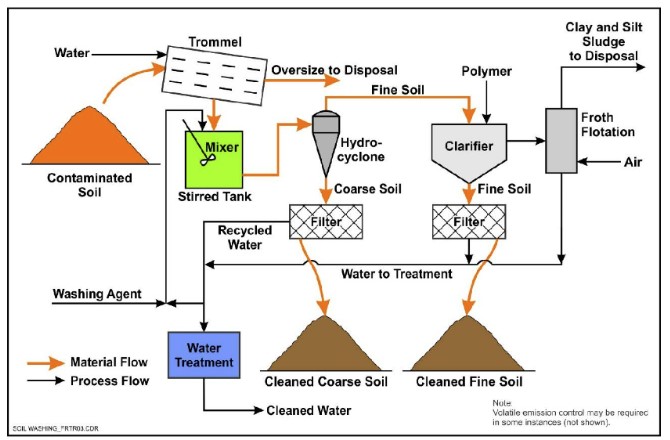PFAS Treatment in Surface Water
Wiki Article
Ingenious PFAS Treatment Solutions for Safer Water
The raising occurrence of PFAS contamination in water products requires an essential evaluation of cutting-edge treatment remedies. Advanced filtering modern technologies and unique chemical therapies present promising opportunities for reducing these relentless contaminants. In addition, emerging bioremediation strategies provide an even more lasting approach to taking on PFAS challenges. As regulative structures continue to adapt, recognizing the effectiveness and scalability of these services comes to be paramount. What ramifications do these advancements hold for public health and wellness and ecological remediation, and just how can stakeholders effectively execute them in diverse contexts?Overview of PFAS Contamination
PFAS contamination has become a considerable ecological and public wellness concern. Per- and polyfluoroalkyl compounds (PFAS) are a group of synthetic chemicals known for their persistence in the environment and body, leading them to be typically described as "permanently chemicals." These substances have actually been commonly used in various industries, consisting of firefighting foams, water-repellent fabrics, and food product packaging, mostly due to their water- and grease-resistant residential or commercial properties.The extensive use PFAS has led to their detection in dirt, water products, and also in the blood of human beings and pets. Researches have actually linked PFAS exposure to numerous health issues, including developmental results in babies, immune system dysfunction, and different forms of cancer. In addition, the ecological determination of these compounds complicates their destruction and removal, raising problems regarding long-term eco-friendly effects.
Governing bodies are progressively applying stringent standards to keep track of and reduce PFAS degrees in drinking water and various other environmental mediums. As awareness of PFAS contamination expands, it has come to be essential for areas and industries to look for effective therapy services to minimize exposure and safeguard public health.
Advanced Purification Technologies
As the seriousness to resolve PFAS contamination heightens, advanced filtering modern technologies have become a critical part in the remediation initiatives targeted at removing these consistent chemicals from water resources. These technologies take advantage of innovative systems to properly target and catch PFAS substances, which are notoriously resistant to standard treatment approaches.One of one of the most encouraging methods is making use of granular triggered carbon (GAC), which adsorbs PFAS particles due to its high surface and porous framework. This method has been widely implemented in both local and commercial settings, showing significant decreases in PFAS focus. Additionally, ion exchange resins have actually acquired grip, specifically developed to uniquely bind PFAS ions from water, thus facilitating their removal.
Membrane layer purification technologies, such as reverse osmosis and nanofiltration, likewise reveal efficiency in PFAS removal by physically dividing impurities from water - pfas management. These systems can achieve high degrees of pureness, making them ideal for alcohol consumption water applications
Chemical Treatment Technologies
Countless chemical treatment innovations are being checked out to properly address PFAS contamination in water supplies. One promising method entails using advanced oxidation processes (AOPs), which utilize powerful oxidants such as ozone, hydrogen peroxide, or chlorine dioxide integrated with UV light to break down PFAS substances right into much less unsafe substances. This method has demonstrated effectiveness in lab settings, revealing potential for scalability in real-world applications.Another innovative strategy is the growth of ion-exchange materials especially developed to target PFAS. These materials can uniquely adsorb PFAS substances from water, permitting their removal throughout treatment processes. Recent developments have actually enhanced the performance and capacity of these resins, making them a beneficial alternative for water therapy centers.
Furthermore, researchers are checking out the usage of chemical representatives like persulfate and ferrous ions to enhance the destruction of PFAS in polluted water. These representatives can induce chemical responses that promote the break down of persistent PFAS substances.
Emerging Bioremediation Strategies
Current innovations in chemical therapy advancements have led the way for checking out bioremediation strategies as a feasible alternative for resolving PFAS contamination. Bioremediation utilizes the all-natural metabolic processes of bacteria to weaken or change pollutants, making it an attractive approach for dealing with relentless contaminants like PFAS.
Emerging strategies in bioremediation include making use of genetically crafted microorganisms that can especially target and break down PFAS substances. These microbial strains are being established for their boosted destruction capabilities, boosting the performance of the remediation process. Furthermore, scientists are investigating the potential of plant-assisted bioremediation, where particular plant varieties may uptake and sequester PFAS from polluted dirt and water.
An additional encouraging approach is the application of bioaugmentation, which involves introducing helpful microorganisms into contaminated atmospheres to enhance the degradation of PFAS. This method can help with quicker removal timelines and boost total effectiveness.

Regulatory Frameworks and Criteria
An extensive regulative structure is crucial for efficiently handling PFAS contamination and making sure public health and wellness security. The boosting acknowledgment of per- and polyfluoroalkyl compounds (PFAS) as toxic wastes has actually triggered different federal and state agencies m270 pfas treatment to develop requirements that regulate their presence in water supplies. The U.S. Epa (EPA) has actually developed health and wellness advisories and is pursuing setting enforceable restrictions for PFAS in alcohol consumption water.State-level laws differ significantly, with some states adopting more stringent standards than those suggested by the EPA. These policies often consist of optimum pollutant levels (MCLs) for details PFAS compounds, monitoring requirements, and reporting commitments for water utilities. Furthermore, emerging structures concentrate on the remediation of infected sites, emphasizing the demand for reliable treatment technologies.

Conclusion
Finally, the growth and application of innovative PFAS therapy options are crucial for dealing with the prevalent problem of water contamination. Advanced filtration technologies, chemical therapies, and arising bioremediation techniques jointly provide a multifaceted strategy to successfully decrease and degrade PFAS degrees. As regulative structures remain to develop, incorporating these modern technologies will be important to safeguard public wellness and bring back the integrity of polluted water sources, eventually adding to a cleaner and more secure setting.Report this wiki page